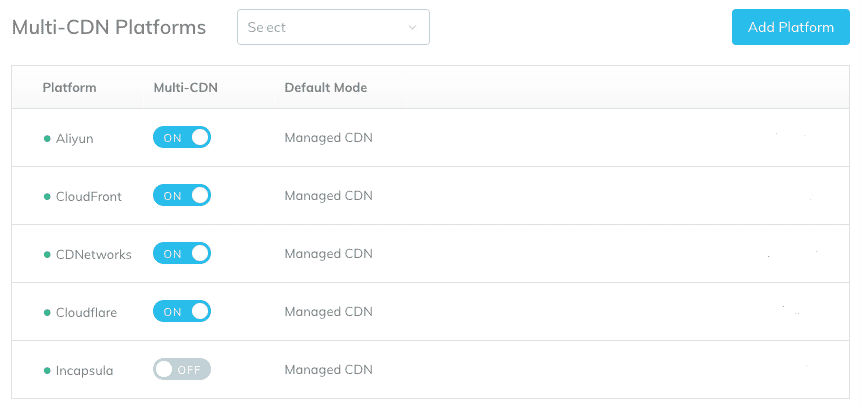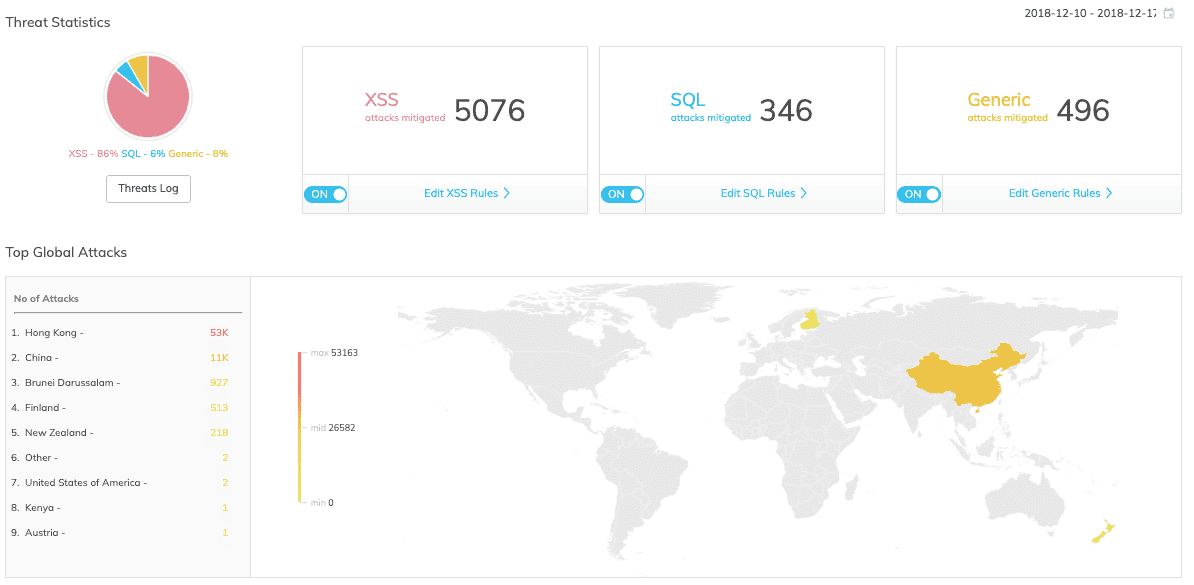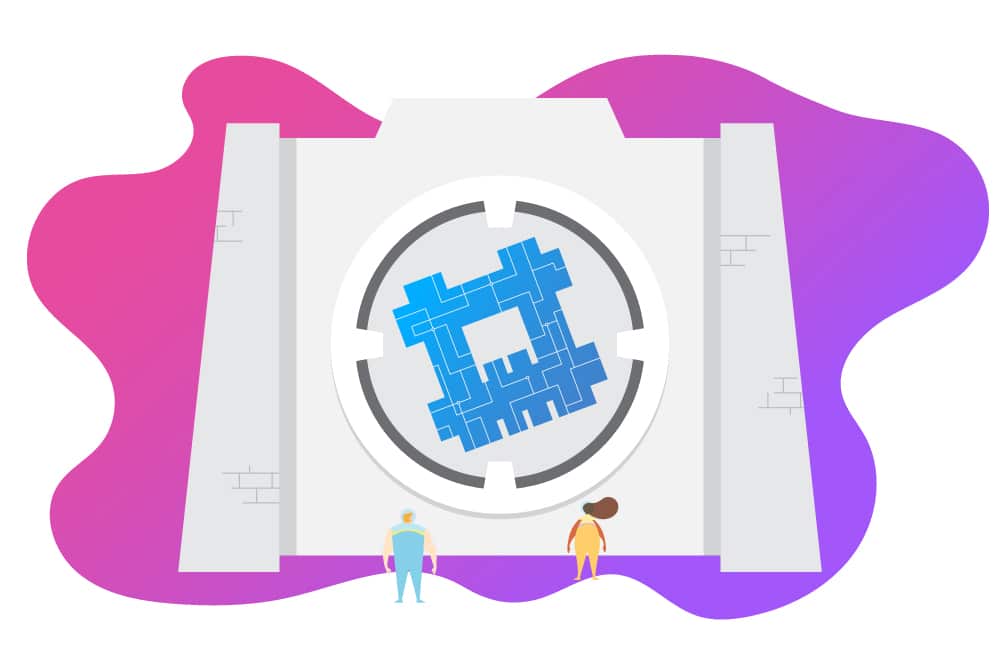A web application firewall (WAF) is an application firewall specifically designed for HTTP applications, which means applications intended to run on the web. A WAF employs a set of rules to an HTTP conversation, usually covering common online attacks like SQL injection and cross-site scripting (XSS).
A WAF operates by using a set of rules commonly known as policies, designed to protect against vulnerabilities in the application by identifying and then filtering out malicious traffic. The benefit of a WAF comes partially from the speed and ease of modifying and implementing policies, which allows for a quicker response to different attack vectors. During a DDoS attack, rate limiting can be quickly applied by modifying WAF policies.
There are three ways to implement a WAF, all with their specific pros and cons. The common variants include:
- Network-based Web Application Firewalls (which are usually hardware-based);
- Host-based Web Application Firewalls (which are often embedded into an application’s software code); and
- Cloud-based Web Application Firewalls (which are generally considered to be easier to implement)
While proxies are generally designed to protect clients, the primary mission of a WAF is to protect servers, deploying to protect a specific web application or group of web applications. A WAF can also be considered a reverse proxy.
WAFs come in many forms, including an appliance, server plugin, or filter. They may be designed for universal deployment or may be customized to an application. However, the technical skill necessary to perform this customization can be significant, and the WAF needs to be maintained as the application is modified. These requirements often lead people away from using WAFs.
Our approach
Mlytics’ primary value proposition is Multi CDN, which combines multiple CDN providers operating simultaneously, thus allowing users to employ many CDNs with a user experience of using just one. To maximize security for end users, we must implement WAF along with the Multi CDN. But traditional methods for integrating WAF with multiple CDNs can be a huge hassle. Realizing that no single WAF provider on the market offers a perfect solution to this Multi CDN scenario, the cutting-edge team at Mlytics tackled this issue head-on.

Mlytics specializes in combining multiple CDNs and load balance them using AI
Designed explicitly for Multi CDN, the Mlytics Web Application Firewall serves as an intermediate layer situated between your web server and all of your CDNs. This approach offers 360-degree protection across all CDNs which can enforce one security policy to all CDNs.

Mlytics WAF comes with granular settings and visualized analytics dashboard
The myltics WAF is developed internally by the security veterans experts and talented engineers at Mlytics and available exclusively for their customers. As added peace of mind for customers, the WAF is managed 24/7/365 by the myltics in-house operations team.
Why did we create a web application firewall?
The Mlytics Web Application Firewall is an intermediate layer that sits between your web server and CDNs. One of its primary roles is safeguarding Mlytics‘ customers from cyber threats and malicious attacks via their respective web applications.
The Mlytics team chose to build a custom WAF to address specific challenges facing network security generally and their customers particularly. The main impetus for the WAF was finding a way to implement a single solution for organizations using multiple CDN platforms or providers. The job of the WAF is to reconcile the different standards in play. The higher variation of standards means a dramatic uptick in the number of distinct risks to resolve, which makes implementing one WAF solution for different CDN platforms extremely complicated.
As anyone who has tried can attest, setting up a single WAF work with multiple CDN platforms is time-consuming and complicated work. Unfortunately, the process becomes much more challenging when you need to change the settings or policy later on; because they need to be adjusted one by one, the process is not only tedious, there are also technical landmines that can cause severe damage if handled poorly.
How the myltics web application firewall addresses challenges
Because Mlytics is a platform specifically built to integrate as many CDN platforms as you need into one convenient location, the Mlytics WAF can standardize your settings for a dynamic and convenient administration experience.
Think of the Mlytics WAF as a multi-purpose tool built to identify and eliminate all risks for all available CDNs; this “Swiss Army Knife” approach means no worries about customizing settings and protocols for every CDN. The result is a single standard, which makes updating security rules and policies for all available CDNs a one-click process.
Web Application Firewall = Increased Functionality
One of the most exciting aspects of the Mlytics Web Application Firewall is the ability to offer numerous advanced features by combining advanced value-add features to meet customer needs. Just a few options include:
- Custom port
- Protocol translate
- Zero SSL
- Edge Rules
- And many more!
A web application firewall built for speed
One of the most common problems associated with adding another layer of WAF is an increase in latency, which causes longer load times. But the myltics team took specific precautions to maintain network speed while still offering cutting-edge functionality and performance.

Mlytics does not compromise between speed and security.
How did we do it? First and foremost, myltics migrates customers by deploying WAF nodes around the world and allowing the customer to choose the closest node. Less distance equals less latency, which equals better performance.
A look “under the hood” reveals that the myltics WAF is based on Nginx, with a focus on core engine development. The WAF uses an applied ModSecurity compatible ruleset, and the Comodo CRS.
The solution for all
With the addition of their dynamic and adaptable Web Application Firewall, Mlytics is proving yet again why they are at the forefront of network deployment and management for organizations big or small. If your organization utilizes multiple CDNs, the myltics WAF will provide you with the tools you need to keep your network running at maximum efficiency.
Learn more about the Mlytics Web Application Firewall and other solutions today.



